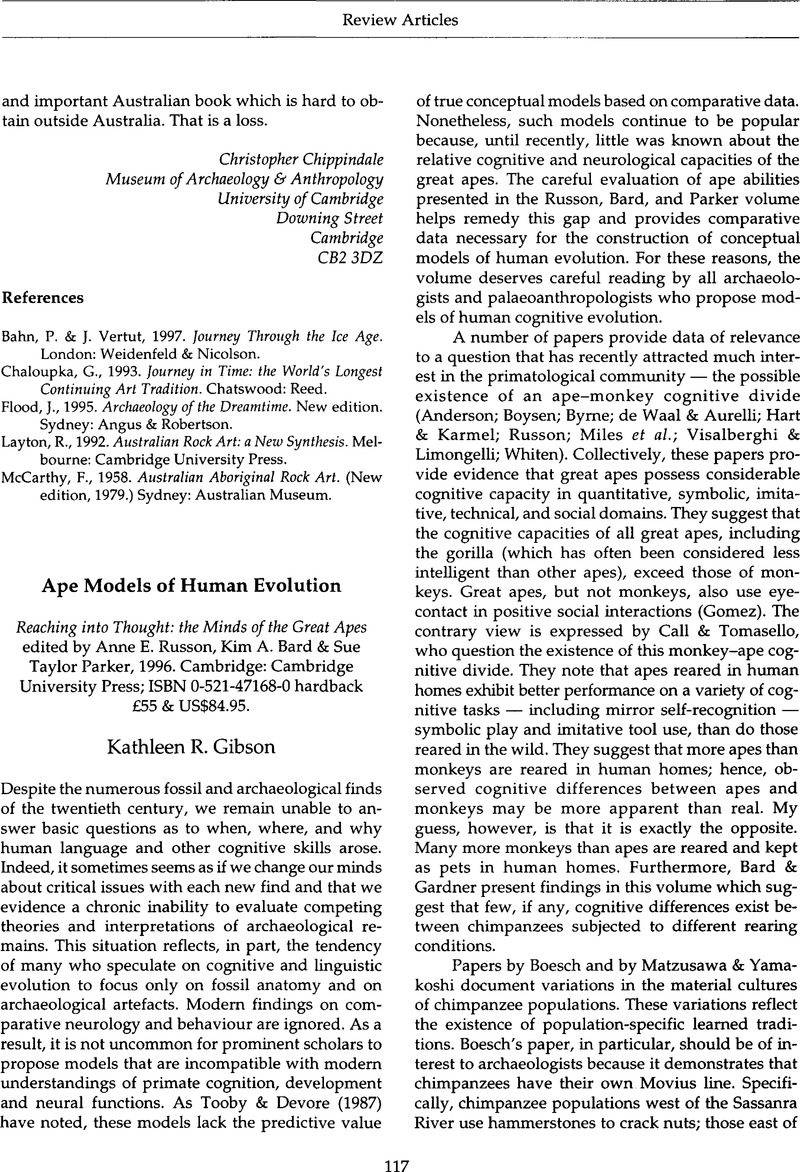No CrossRef data available.
Article contents
Ape Models of Human Evolution
Published online by Cambridge University Press: 22 December 2008
Abstract
An abstract is not available for this content so a preview has been provided. Please use the Get access link above for information on how to access this content.

- Type
- Review Articles
- Information
- Copyright
- Copyright © The McDonald Institute for Archaeological Research 1998
References
Gibson, K.R., 1990. New perspectives on instinct and intelligence: brain size and the emergence of hierarchical mental constructional skills, in Language and Intelligence in Monkeys and Apes: Comparative Developmental Perspectives, eds. Parker, S.T. & Gibson, K.R.. Cambridge: Cambridge University Press, 97–128.Google Scholar
Greenfield, P.M., 1991. Language, tools, and the brain: the ontogeny and phylogeny of hierarchically organized sequential behavior. Behavioral and Brain Sciences 14, 531–95.CrossRefGoogle Scholar
Parker, S.T. & Gibson, K.R., 1979. A model of the evolution of language and intelligence in early hominids. Behavioral and Brain Sciences 2, 367–407.Google Scholar
Tooby, J. & Devore, I., 1987. The reconstruction of hominid behavioral evolution through strategic modeling, in The Evolution of Human Behavior: Primate Models, ed. Kinsey, W.G.. Albany (NY): State University of New York Press, 183–237.Google Scholar




